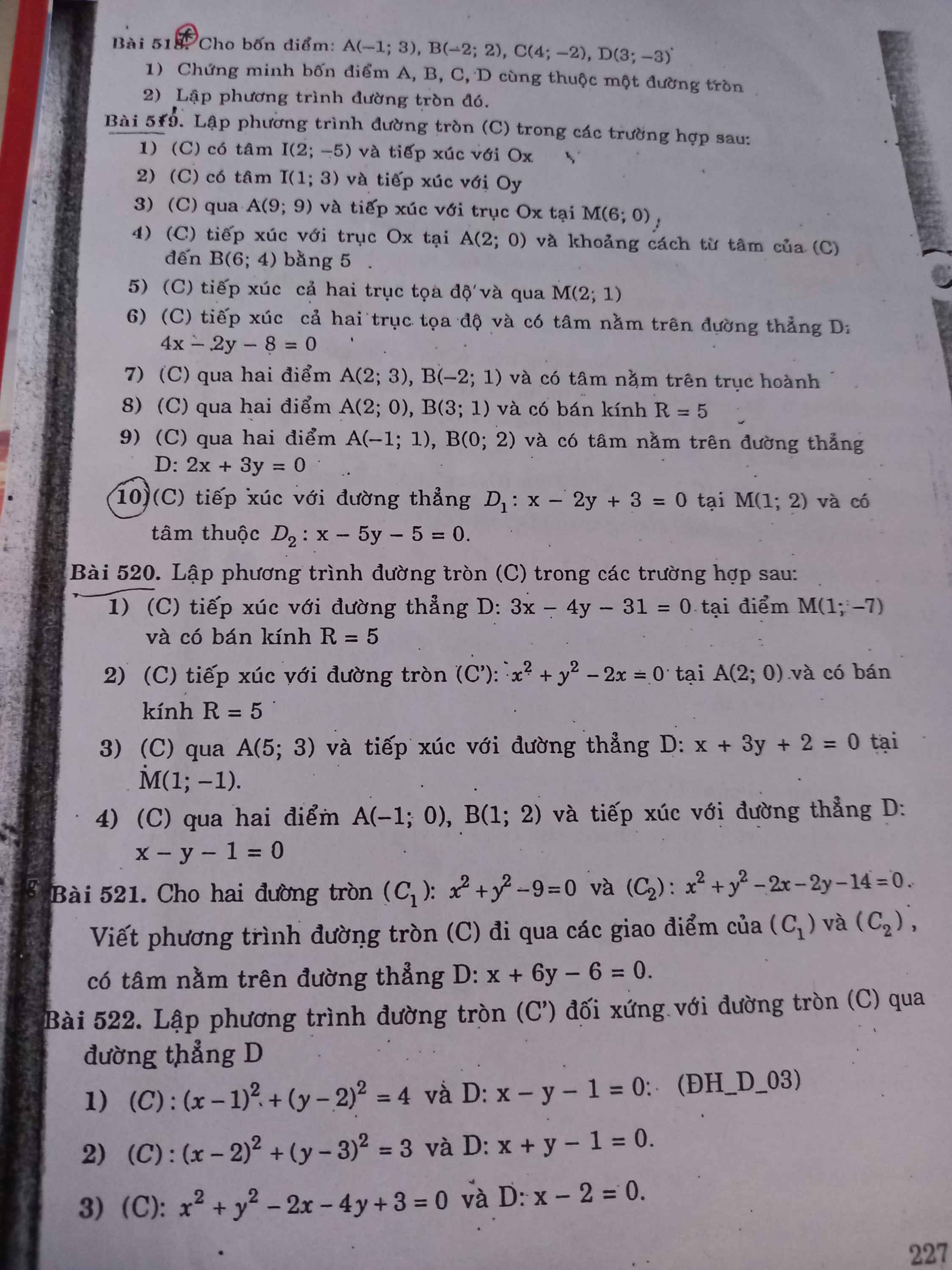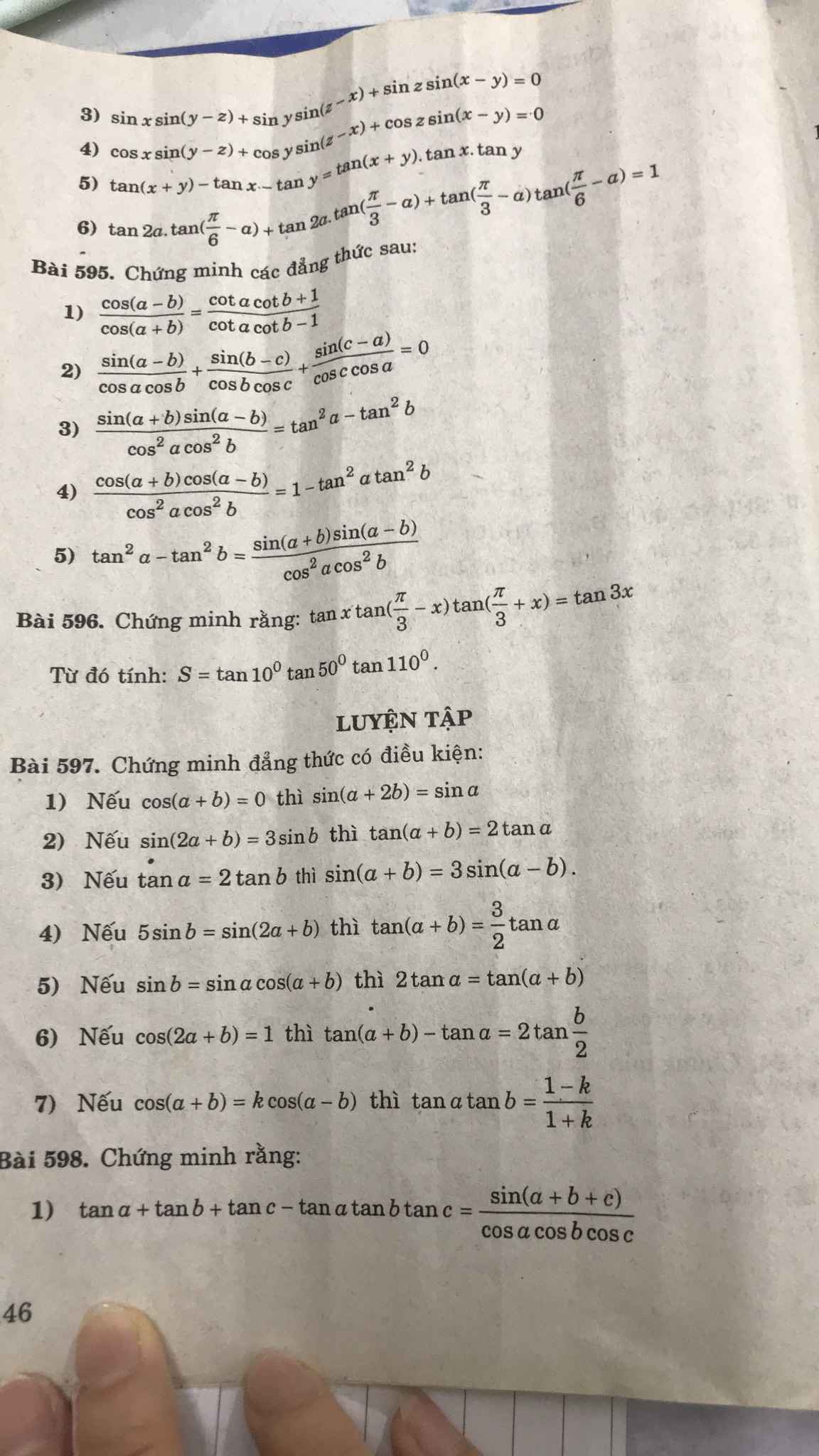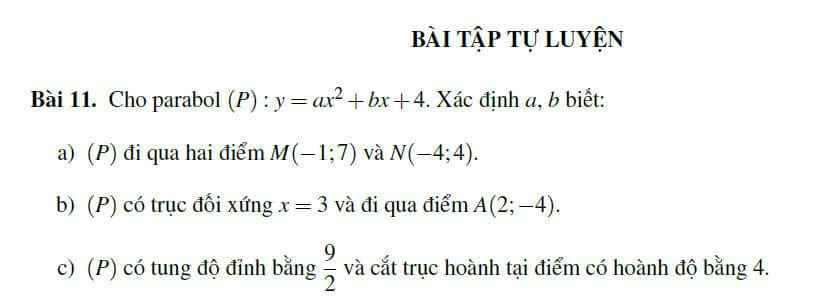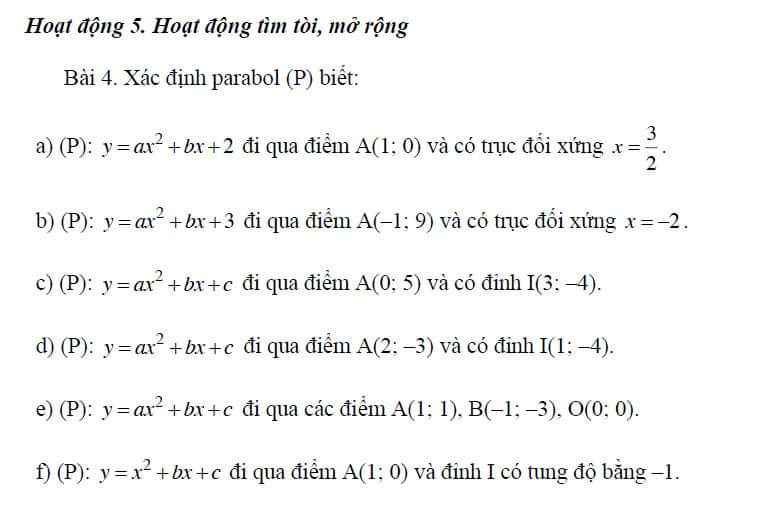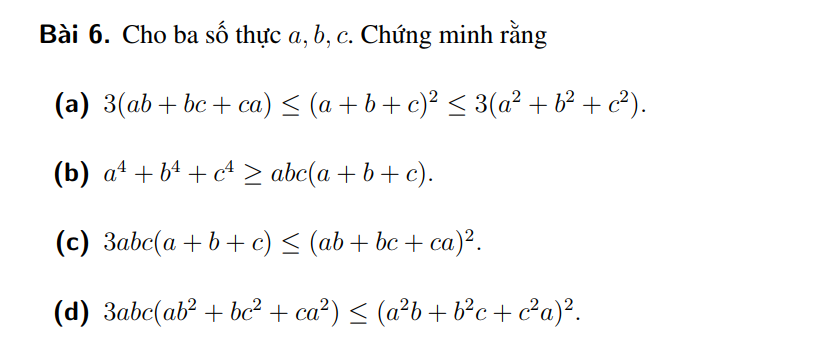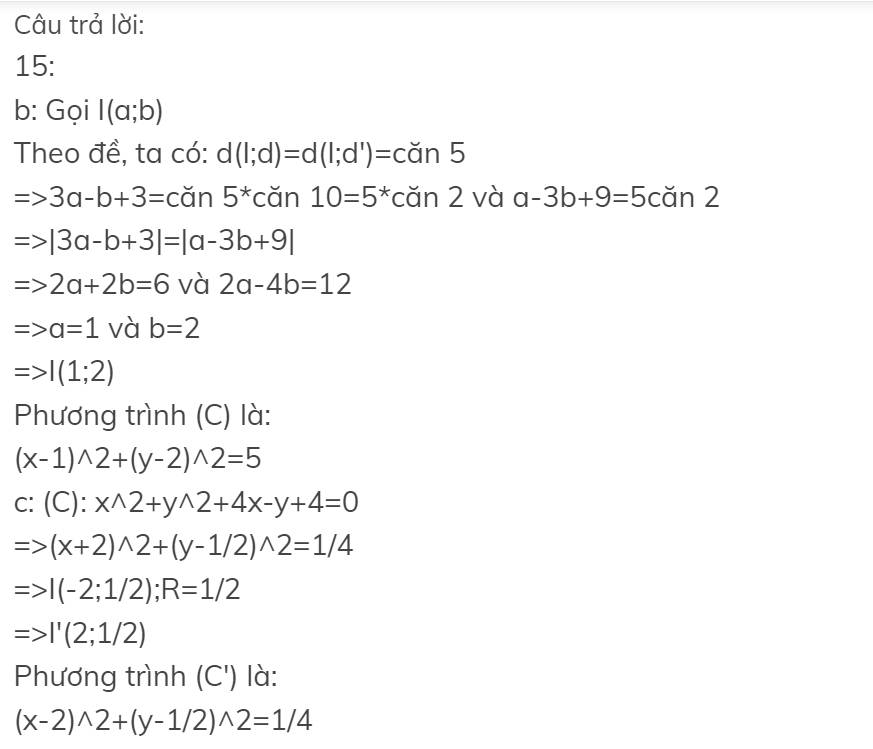
Hãy nhập câu hỏi của bạn vào đây, nếu là tài khoản VIP, bạn sẽ được ưu tiên trả lời.





5:
(d) vuông góc 2x-y-2018=0
=>(d): x+2y+c=0
(C): x^2+4x+4+y^2-6y+9-25=0
=>(x+2)^2+(y-3)^2=25
=>R=5; I(-2;3)
Theo đề, ta có: d(I;(d))=5
=>\(\dfrac{\left|1\cdot\left(-2\right)+2\cdot3+c\right|}{\sqrt{5}}=5\)
=>|c+4|=5căn 5
=>c=5căn5-4 hoặc c=-5căn 5-4

595:
a: \(\dfrac{cota\cdot cotb+1}{cota\cdot cotb-1}=\left(\dfrac{cosa}{sina}\cdot\dfrac{cosb}{sinb}+1\right):\left(\dfrac{cosa}{sina}\cdot\dfrac{cosb}{sinb}-1\right)\)
\(=\dfrac{cosa\cdot cosb+sina\cdot sinb}{sina\cdot sinb}:\dfrac{cosa\cdot cosb-sina\cdot sinb}{sina\cdot sinb}\)
\(=\dfrac{cos\left(a-b\right)}{cos\left(a+b\right)}\)
3: \(\dfrac{sin\left(a+b\right)sin\left(a-b\right)}{cos^2a\cdot cos^2b}=\dfrac{\left(sina\cdot cosb+sinb\cdot cosa\right)\left(sina\cdot cosb-sinb\cdot cosa\right)}{cos^2a\cdot cos^2b}\)
\(=\dfrac{sin^2a\cdot cos^2b-sin^2b\cdot cos^2a}{cos^2a\cdot cos^2b}\)
\(=\dfrac{sin^2a\cdot cos^2b-cos^2a\left(1-cos^2b\right)}{cos^2a\cdot\left(cos^2b\right)}\)
\(=\dfrac{sin^2a\cdot cos^2b+cos^2a\cdot cos^2b-cos^2a}{cos^2a\cdot cos^2b}=\dfrac{cos^2b-cos^2a}{cos^2a\cdot cos^2b}\)
tan^2a-tan^2b
=(sin^2a/cos^2a)-(sin^2b/cos^2b)
=(\(=\dfrac{\left(sina\cdot cosb\right)^2-\left(sinb\cdot cosa\right)^2}{cos^2a\cdot cos^2b}=\dfrac{\left(sina\cdot cosb-sinb\cdot cosa\right)\left(sina\cdot cosb+sinb\cdot cosa\right)}{cos^2a\cdot cos^2b}\)
=sin(a+b)sin(a-b)/cos^2a*cos^2b
4:
1-tan^2a*tan^2b
\(=1-\dfrac{sin^2a\cdot sin^2b}{cos^2a\cdot cos^2b}=\dfrac{cos^2a\cdot cos^2b-sin^2a\cdot sin^2b}{cos^2a\cdot cos^2b}\)
\(=\dfrac{\left(cosa\cdot cosb-sina\cdot sinb\right)\left(cosa\cdot cosb+sina\cdot sinb\right)}{cos^2a\cdot cos^2b}\)
\(=\dfrac{cos\left(a+b\right)\cdot cos\left(a-b\right)}{cos^2a\cdot cos^2b}\)

11c.
Từ đề bài ta có:
\(\left\{{}\begin{matrix}\dfrac{16a-b^2}{4a}=\dfrac{9}{2}\\16a+4b+4=0\end{matrix}\right.\)
\(\Leftrightarrow\left\{{}\begin{matrix}2b^2=-4a\\b=-4a-1\end{matrix}\right.\)
\(\Rightarrow2b^2-b=1\Leftrightarrow2b^2-b-1=0\Rightarrow\left[{}\begin{matrix}b=1\Rightarrow a=-\dfrac{1}{2}\\b=-\dfrac{1}{2}\Rightarrow a=-\dfrac{1}{8}\end{matrix}\right.\)
Có 2 parabol thỏa mãn: \(\left[{}\begin{matrix}y=-\dfrac{1}{2}x^2+x+4\\y=-\dfrac{1}{8}x^2-\dfrac{1}{2}x+4\end{matrix}\right.\)
4f.
Từ đề bài ta có:
\(\left\{{}\begin{matrix}1+b+c=0\\\dfrac{4c-b^2}{4}=-1\end{matrix}\right.\)
\(\Leftrightarrow\left\{{}\begin{matrix}c=-b-1\\c=\dfrac{b^2}{4}-1\end{matrix}\right.\)
\(\Rightarrow\dfrac{b^2}{4}+b=0\)
\(\Rightarrow\left[{}\begin{matrix}b=0\Rightarrow c=-1\\b=-4\Rightarrow c=3\end{matrix}\right.\)
Có 2 parabol thỏa mãn: \(\left[{}\begin{matrix}y=x^2-1\\y=x^2-4x+3\end{matrix}\right.\)

Hai câu c và d chỉ là BĐT \(\left(x+y+z\right)^2\ge3\left(xy+yz+zx\right)\), cách chứng minh \(\left(x+y+z\right)^2\ge3\left(xy+yz+zx\right)\) thế nào thì chứng minh c và d như vậy (biến đổi thành tổng của 3 bình phương các hiệu)
Với câu c thì \(x=ab;y=bc;z=ca\), câu d thì \(x=a^2b;y=...\)
Nhờ thầy viết cho em vài dòng câu d với ạ, câu d em chưa xử lý được thầy ạ?

Bài 10:
a: \(\overrightarrow{AB}+\overrightarrow{BO}+\overrightarrow{OA}\)
\(=\overrightarrow{AO}+\overrightarrow{OA}=\overrightarrow{0}\)
b: \(\overrightarrow{OA}+\overrightarrow{BC}+\overrightarrow{DO}+\overrightarrow{CD}\)
\(=\overrightarrow{OA}+\overrightarrow{DO}+\overrightarrow{BD}\)
\(=\overrightarrow{OA}+\overrightarrow{BO}=\overrightarrow{BA}\)
